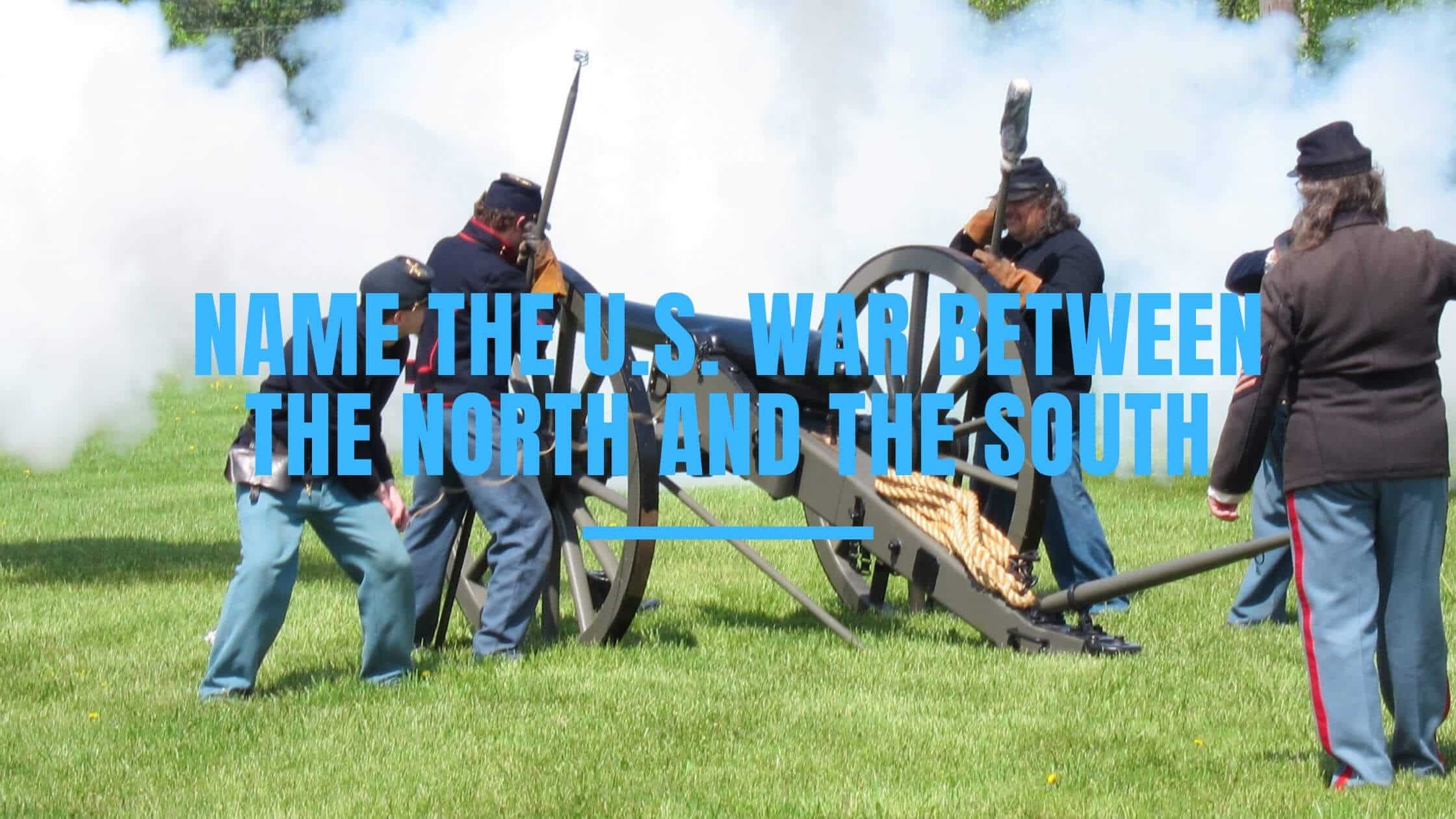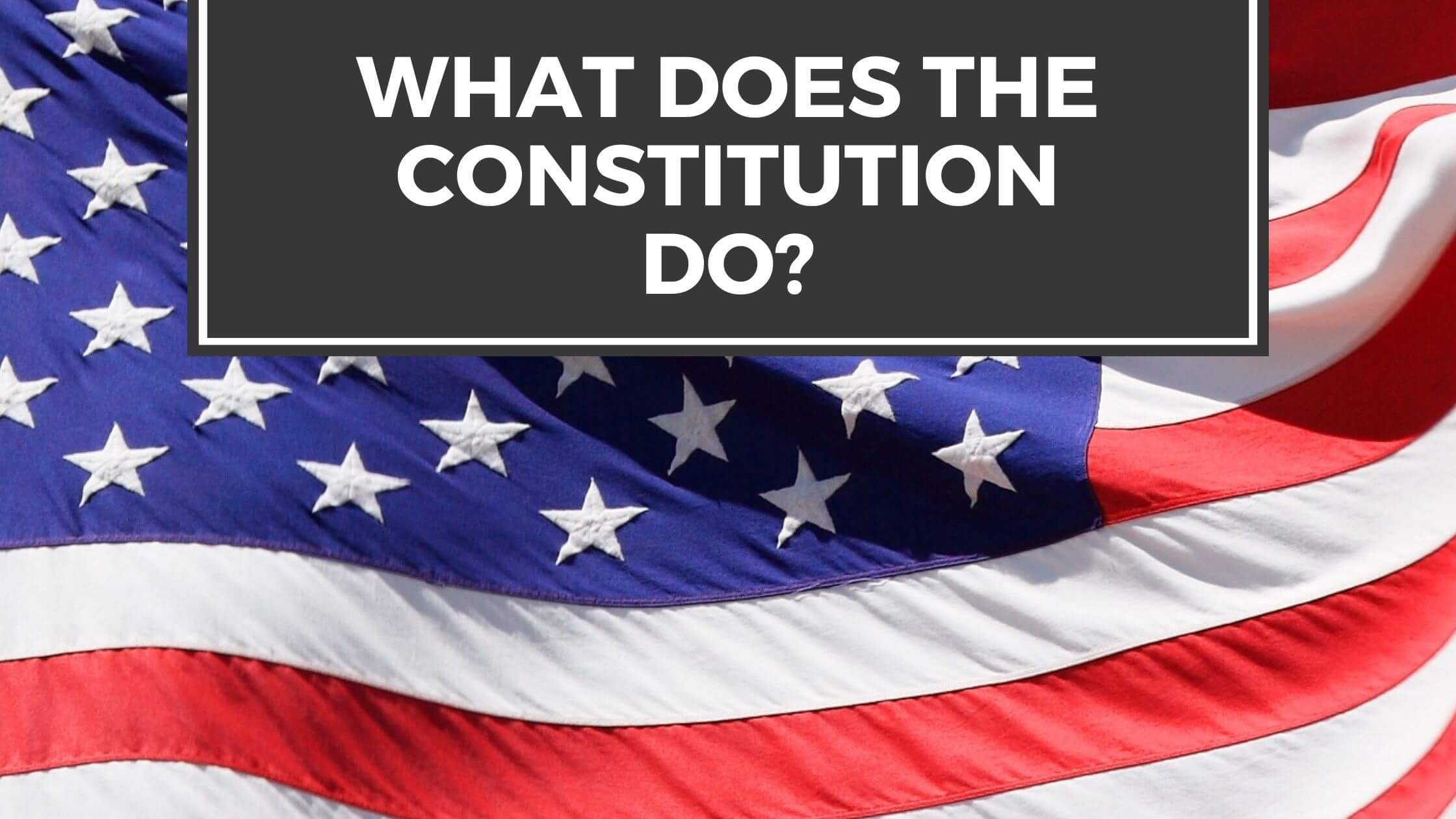Table of Contents
ToggleTo pass the US citizenship test, you will have to answer 10 of a possible 100 questions. The following question is from the USCIS test.
Name the U.S. War between the North and the South
Acceptable Answer:
- the Civil War
- the War between the States
The following is a full explanation of the USCIS question:
American Civil War
The Civil War was a military conflict in the United States fought from 1861 to 1865 between the northern states and southern states. The civil war arose over the conflict between the north-south divisions on the status and spread of slavery in the United States.

Get Smarter on US News, History, and the Constitution
Join the thousands of fellow patriots who rely on our 5-minute newsletter to stay informed on the key events and trends that shaped our nation's past and continue to shape its present.
The Northern States wanted to get rid of slavery. However, the Southern States owned many slaves and didn’t want to give them up.
These divisions prompted 11 pro-slave southern states to secede from the United States and form a new republic known as the Confederacy. This was after the election of President Abraham Lincoln in 1860.
President Abraham Lincoln quickly declared war on the Confederacy, seeking to subdue and readmit the states into the country forcibly.
Opening Act of the American Civil War
The beginning of the American Civil War centered around Fort Sumter, a federal fort located on an island off the coast of South Carolina. The fort was low on provisions and had to be resupplied or else surrender, which was more complicated by its location within the Confederacy.
President Abraham Lincoln did not want to abandon the fort but had no wish to be viewed as the instigator in an inevitable war with the southern states.
Lincoln came up with a brilliant solution to the problem, informing the governor of South Carolina that he would resupply the fort with non-military provisions.
As a result, the Confederacy would have to oppose the landing and be viewed as the aggressor or allow the landing and let the fort continue to function, a blow to southern prestige.
President Jefferson Davis of the Confederacy responded by ordering the garrison on Fort Sumter to surrender, which was promptly refused by fort commandant Major John Anderson.
Battle of Fort Sumter
On the morning of April 12, 1861, southern batteries bombarded the fort, which surrendered the next day.
The Battle of Fort Sumter was a minor engagement that resulted in no deaths but was the seminal moment that started the American Civil War. It provided the Confederacy a symbolic victory that helped unify the upper and lower southern states and gave Lincoln the political clout to initiate the Civil War, allowing him to claim he was responding to southern aggression.
1861 – First Battle of Bull Run
The First Battle of Bull Run was the earliest major military action between the Union and Confederacy, setting the tone for the first year of the war. The Union army under General Irvin McDowell engaged a Confederate force under General Joseph Johnston and P. G. T. Beauregard near an important railway junction in Manassas, Virginia.
After initially driving back the Confederates, the Union army was defeated when additional southern reinforcements arrived.
The First Battle of Bull Run resulted in about 4700 casualties overall. 2700 of those were for the Union and 2000 for the Confederacy. This was a small number compared to many later Civil War battles. It shattered the commonly held viewpoint of the day that the war would be over quickly, as both sides soon regrouped and prepared for an extended conflict.
In response to General McDowell’s failure, President Lincoln appointed General George McClellan to reorganize and lead the Union army in the eastern theater.
1862 – Confederate Success in the East and Union Success in the West
Most of the public’s attention during the Civil War centered around the eastern front in Virginia, mainly because the Union and Confederacy capitals were located there. Much of 1862 on that front saw repeated Confederate successes, starting with General Stonewall’s Valley Campaign in the western part of Virginia in the spring of 1862.
Jackson was repeatedly able to defeat and elude larger Union armies, forcing the Union to divert significant manpower and resources away from General George McClellan in the eastern part of the state.
General Robert E. Lee was given command of the Confederate forces in Virginia in June 1862 and proceeded to score several defeats against the Union forces, including the Second Battle of Bull Run and Fredericksburg. General McClellan defeated him at the Battle of Antietam, one of the only two major battles fought in the northern states after Lee decided to invade the Union.
After the Battle of Antietam, President Lincoln permanently replaced General McClellan and issued the Emancipation Proclamation, where he freed all slaves in Confederate states.
The Union army saw more success in the West, defeating the Confederate States in the Battle of Shiloh in April 1862. This was the first large-scale battle of the Civil War. The Union also inflicted several defeats on Confederate forces along the Mississippi River, capturing Forts Henry, Donelson, and Island Number 10. By the end of 1862, most of the Mississippi River was under the control of Union forces, apart from the fortress at Vicksburg.
1863 – Climax at Gettysburg and Vicksburg
The Union army continued to struggle in the East, suffering another demoralizing defeat at the Battle of Chancellorsville. However, General Lee used the momentum from this victory to attempt a second invasion of the North, seeking to relieve Virginia, which had been ravaged by constant warfare for nearly two years.
After three days of fighting, Lee was repulsed at the Battle of Gettysburg by Union troops under General George Meade, culminating in a disastrous assault on the center of the Union lines on July 3, 1863, known as Pickett’s Charge.
The Confederate State’s defeat at Gettysburg was quickly followed by the fall of Vicksburg to General Ulysses Grant on July 4, 1863. Vicksburg was the last Confederate stronghold on the Mississippi River.
The devastating Confederate army setbacks at Gettysburg and Vicksburg were the Civil War turning points. However, the war would still rage on for two more years as the conflict transitioned to total warfare.
1864 – Ulysses S. Grant and the Election of 1864
Due primarily to his success in the West at Vicksburg, General Ulysses S. Grant was given command of the Union armies in the East. He was eventually put in command of all Union forces in the country. Grant proved to be a far more aggressive general than all previous generals in the eastern theater, constantly attacking the Confederate forces. Although he was defeated in two major engagements with the Confederates at the Battle of the Wilderness and Spotsylvania Courthouse in May of 1864, the Confederates could not replace the lost manpower suffered during these battles.
The Election of 1864 proved to be the last hope of the Confederacy achieving their independence. If Lincoln was defeated by his opponent, former general George McClellan, there was a possibility that the Union would entertain peace talks to end the war. However, Lincoln easily defeated McClellan, and the end of the Confederacy was imminent.
1865 – End of the War
General Grant continued to aggressively pursue and engage the Confederate army throughout most of 1865, showcasing impressive tactics that at times even surpassed those of General Lee. The dwindling resources of the Confederacy, exacerbated by General George Sherman’s devastating raiding campaigns in Georgia and South Carolina, could no longer support a major military conflict against the Union. After holding out in trenches around Petersburg for most of 1865, General Lee surrendered to General Grant on April 9, 1865.











